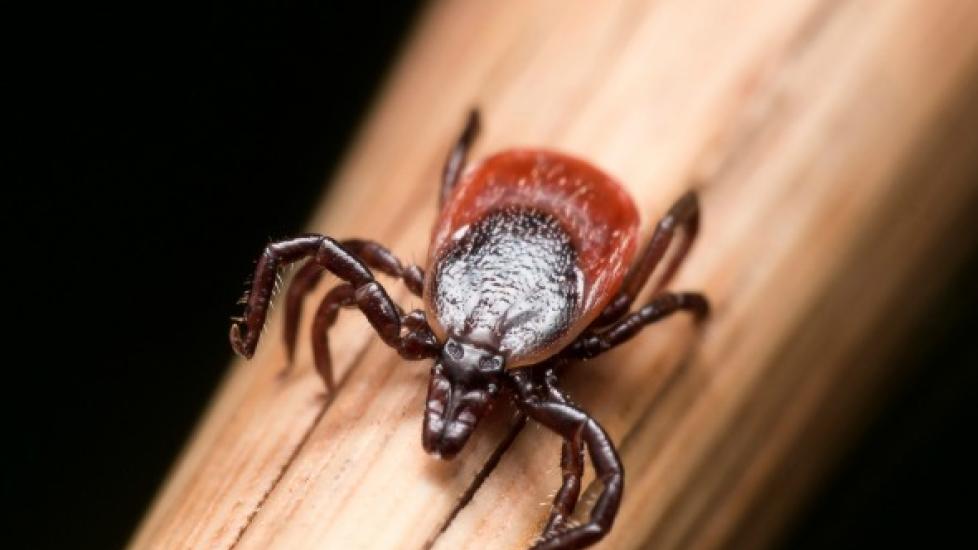Tick Species Profiles: Deer Tick
Scientific name: Ixodes scapularis
The deer tick, also known as the black-legged tick, is a species of hard bodied tick that’s native to North America. An abundance of deer ticks can be found primarily in the northeast, midwest and southeast areas of the United States and into portions of Canada and Mexico.
Deer ticks are a type of arachnid. They have eight legs except for when they first hatch, when they have six legs. Their bodies are round and flat, reaching an average adult length of 3 mm, and their legs and heads are solid black.
Adult females have black dorsal shields with dark red abdomens, while males are a solid dark brown to black color. They become much larger when engorged with blood.
Feeding Habits and Active Seasons of the Deer Tick
Deer ticks are three-host ticks, meaning that they feed from a different type of animal during each of their three life stages. Deer ticks can be active year round, posing a risk to outdoor enthusiasts, hikers, pets and their owners. Adult deer ticks can even be active in the winter on days when the ground and temperature is above freezing.
Deer ticks are ambush predators, meaning they hide and wait on the ground or in tall grasses, brush, low hanging tree branches, bushes and leaf litter, waiting for their host to brush by so that they can attach and feed. All dogs and cats are at risk, but it can be harder to find these dark, small parasites on pets with long, dark fur. Small and large mammals, including pets and humans, can become prey for deer ticks, in addition to birds and lizards.
Deer Tick vs. Brown Dog Tick: How to Tell the Difference
Deer ticks are often mistaken for another species of tick called the Brown Dog Tick, which can transmit a variety of deadly diseases like Rocky Mountain Spotted Fever, canine ehrlichiosis, and canine babesiosis.
The major difference between these two tick species is that the deer tick has black legs and is an overall darker, more black color; while the brown dog tick has light brown legs and a brown body. Deer ticks also tend to be half the size of brown dog ticks. If you suspect your pet has either type of tick, it should be properly stored and examined by your veterinarian.
What to Do If Your Pet Has a Tick
If when conducting your pet’s daily tick check you find one, the first thing to do is remain calm and do not try to yank it out. Ticks can dislodge their mouth parts in the skin of the host where it can cause further irritation. There are special tick removal tools, or you can use a pointed tweezer to firmly grasp the head and pull steadily outwards until it releases. After tick removal it’s important to put the body in a pill bottle or plastic bag and take it to your vet to be examined.
You should always swab the bite site with isopropyl alcohol or another disinfectant after removing the tip, and dab with Neosporin if desired. We have a complete guide outlining the dos and don'ts of tick removal in case your pet becomes prey.
Tips to Prevent Your Pet from Getting Ticks
If you have a pet that goes outdoors, there are steps you can take to help them stay tick-free. There are various tick products for pets that come as chewables, collars, “spot-on,” and whole body sprays. Cats tend to be a bit more sensitive to these types of treatments and if you have pet cats consult your vet.
Even if you are using preventive products on your pet, they can still get ticks. That’s why performing daily tick checks on pets is so important. Some other tips to help keep you and your pets tick-free include:
- When going for walks, stay in the middle of the path and away from errant shrubbery.
- For dogs, combine monthly preventive treatments with on-time Lyme vaccinations, especially if living in a part of the country where Lyme disease is endemic.
- Keep your pet away from piles of leaves and other leaf-litter, ticks like to hide in it.
- Ticks can’t live in the middle of a yard - they thrive on the edges. Use a solid fence to keep wildlife that may be harboring ticks out.
- Always brush your pet once it comes in from outdoors. If your pet has longer hair, the tick may take a while to reach the animal’s skin and could end up attaching itself to you or a family member in the meantime.
Help us make PetMD better
Was this article helpful?
